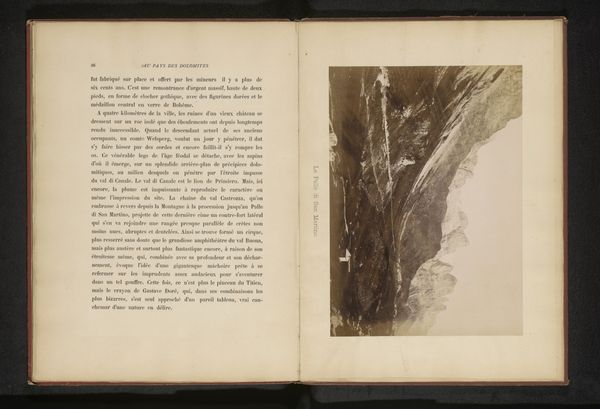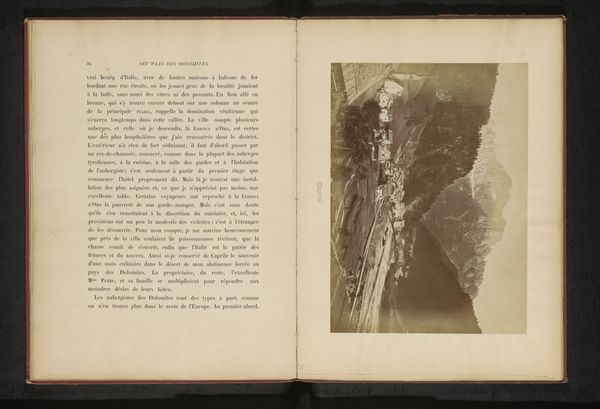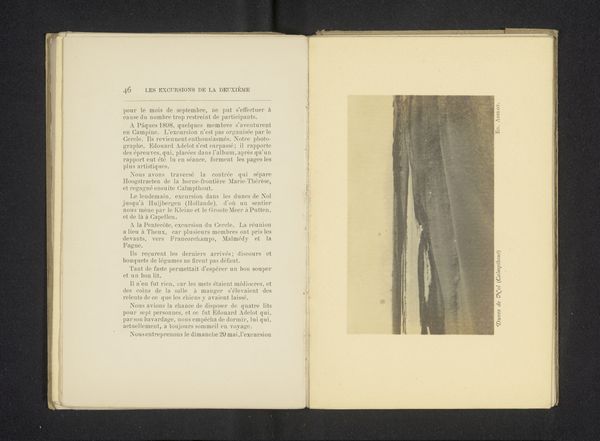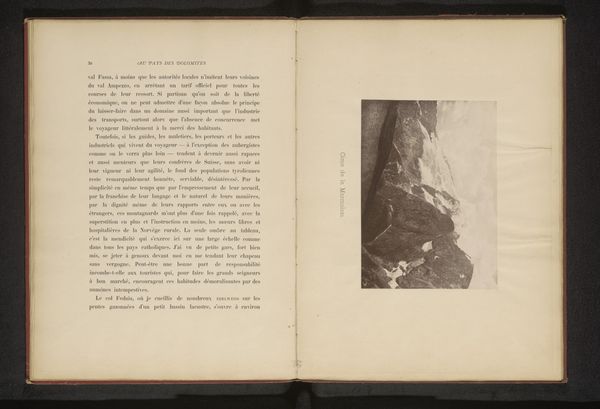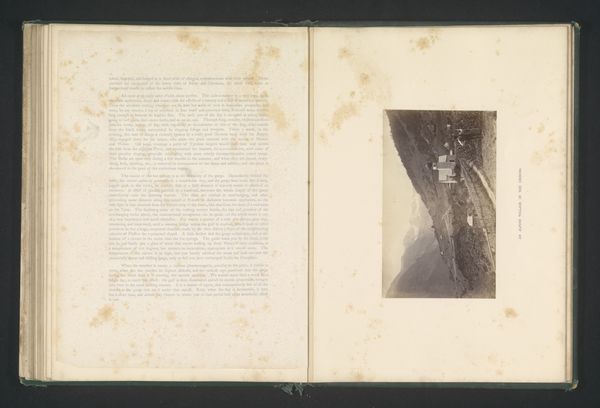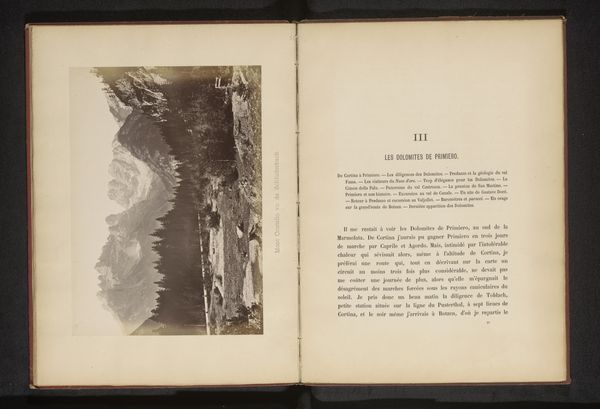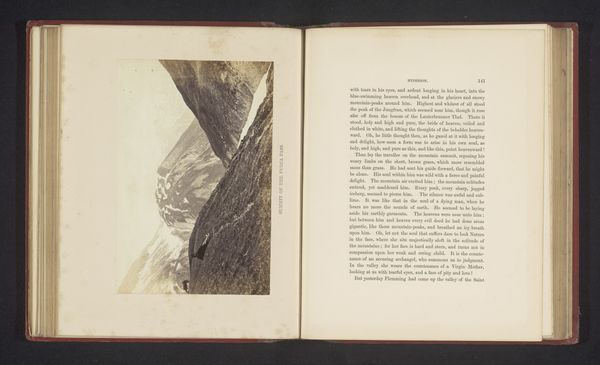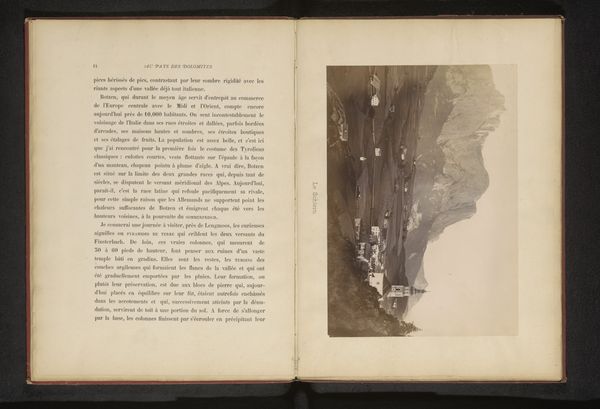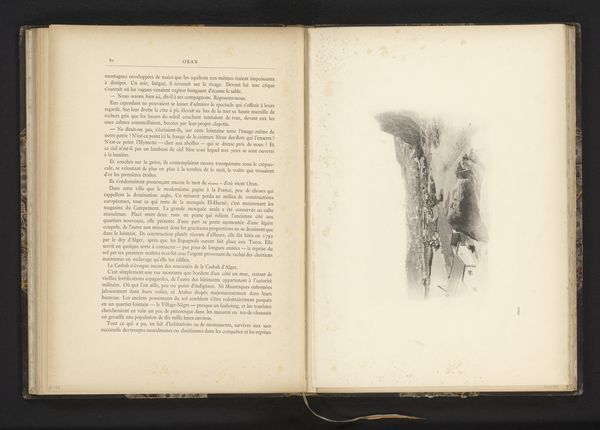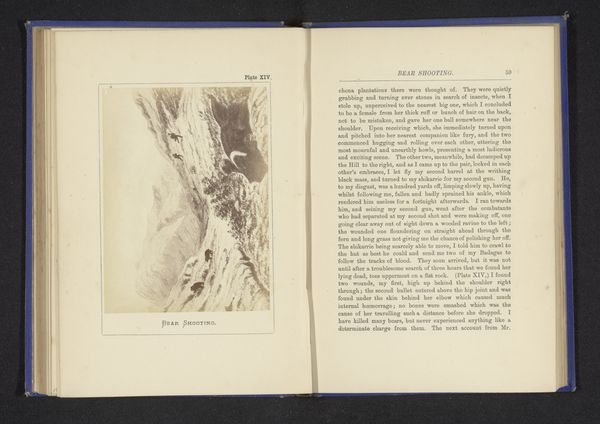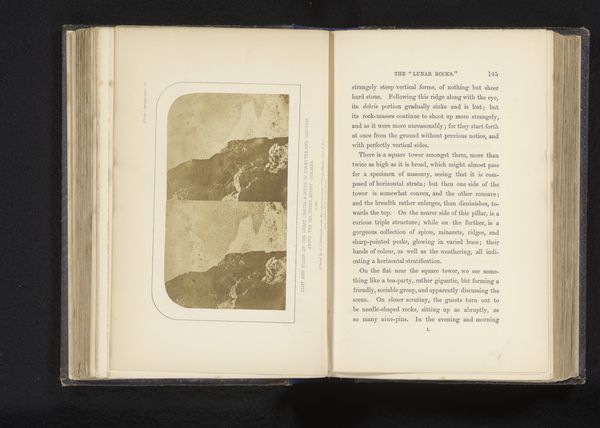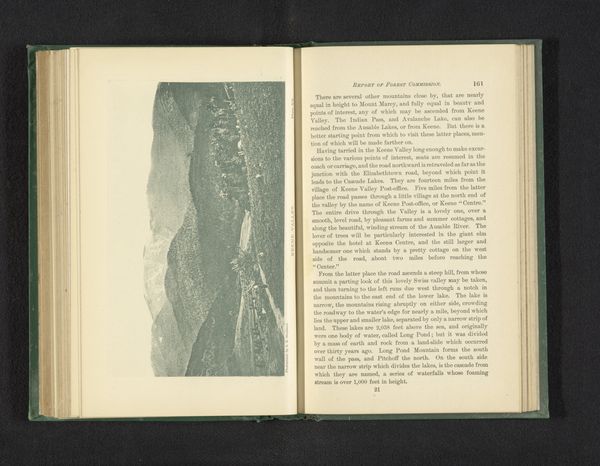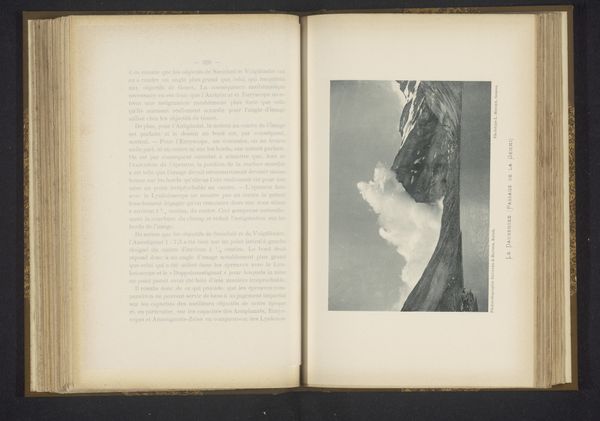
Gezicht op het bergmassief Rosengarten in de Dolomieten, Italië before 1878
0:00
0:00
Dimensions: height 192 mm, width 252 mm
Copyright: Rijks Museum: Open Domain
Editor: This is a fascinating photograph by Eugène Goblet d'Alviella, taken before 1878, titled 'View of the Rosengarten massif in the Dolomites, Italy.' It’s a landscape shot, printed in sepia, and honestly, it's a bit…bleak. What do you see in this piece? Curator: It’s a fascinating interplay of light and shadow. Consider the composition: the artist presents a sharp contrast between the solid, dark forms of the mountains on the right and the softer, hazy presence of the mountain range on the left. The interplay suggests depth. The artist uses the photograph’s tonal range to construct a world which seems almost a theater. How does that affect you? Editor: The way the composition is divided does make me think of a stage, where something's about to happen in the background… It definitely gives a sense of drama. Curator: Indeed. Note, also, the materiality. Photography was a relatively new medium at the time. This isn't a simple representation; the photograph itself – its textures and tonal manipulations – contribute to the subject’s evocative impact. It is an early example of how the qualities of photography as a medium inform Romanticism. Editor: I never thought of the materiality of photography itself adding to the 'romantic' feel, it makes sense. It makes me appreciate the technical skills, and artistic intent to use this particular medium. Curator: Precisely. And these aspects considered together enhance our understanding. The power is in how d’Alviella is utilizing both photographic and compositional strategies to convey an almost operatic reading of a space. Editor: This has made me rethink what the essence of the photograph is trying to tell. It’s an artwork created out of sharp contrasts and tonal juxtapositions. Curator: Exactly.
Comments
No comments
Be the first to comment and join the conversation on the ultimate creative platform.
